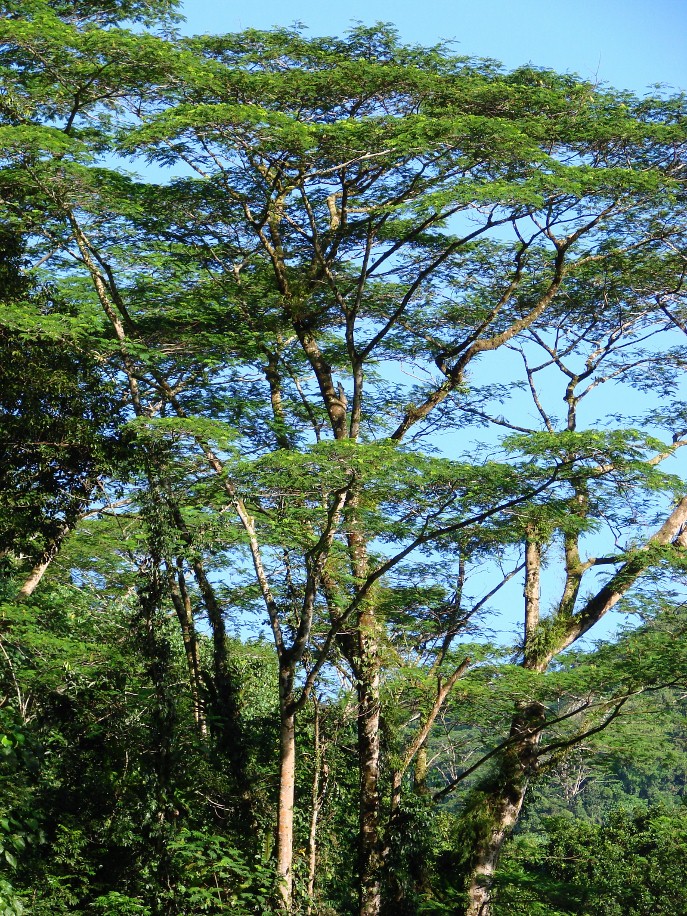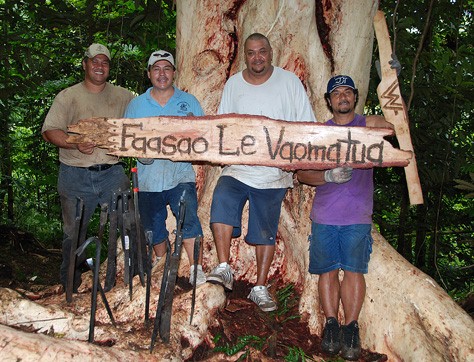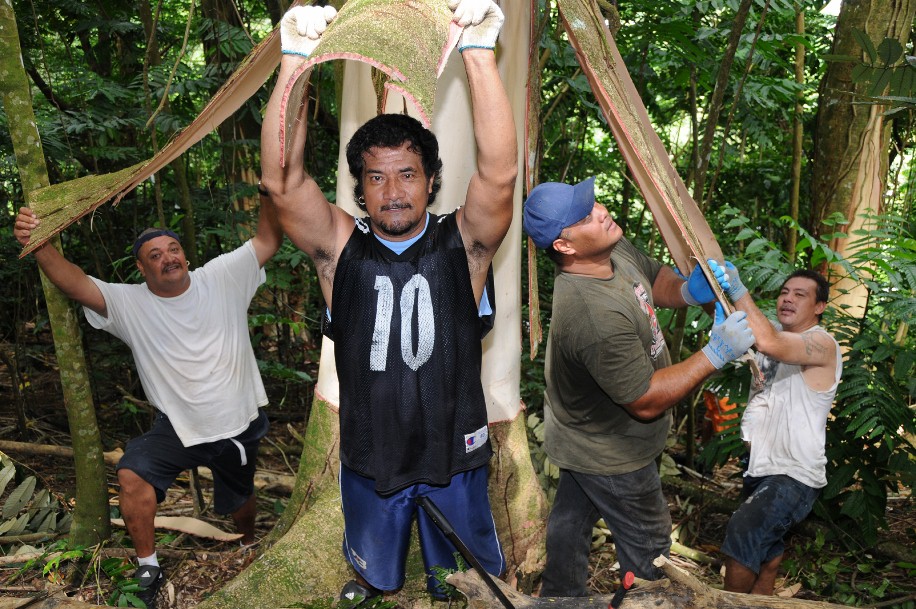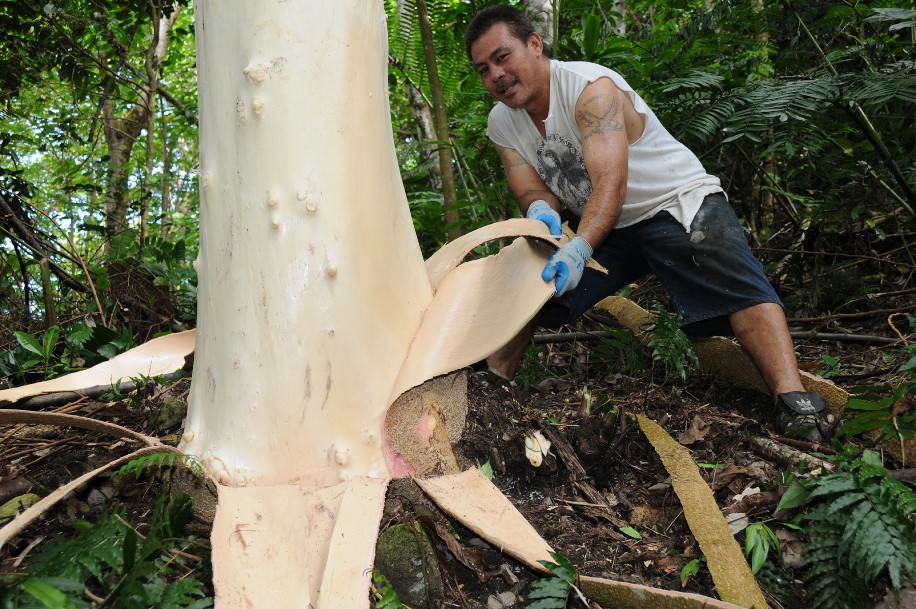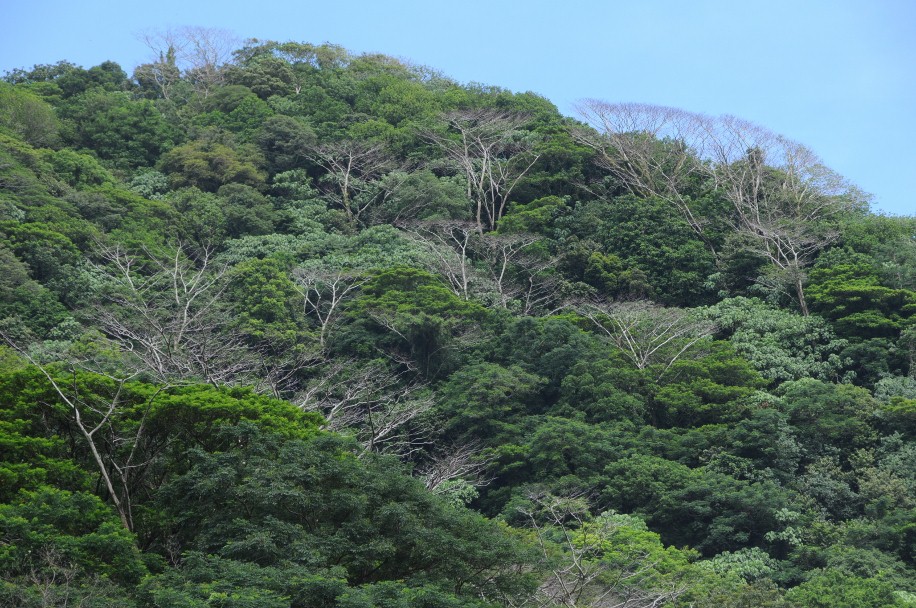A major eradication effort is underway to eliminate a highly invasive tree species, Falcataria moluccana, from American Samoa. The trees have invaded about 35 percent of the forested land of Tutuila, the main island of American Samoa. The National Park Service has led efforts to fight back. Its ongoing efforts have killed every large seed tree across more than 1,000 acres of the infested areas.
With support from Seacology, more than 1,700 large Falcataria seed trees have already been killed, and over 500 acres of native rainforest have been reclaimed in Fagasa Village and the national park. This project will take out another 1,000 trees, reclaiming an additional 120 acres of forest.


